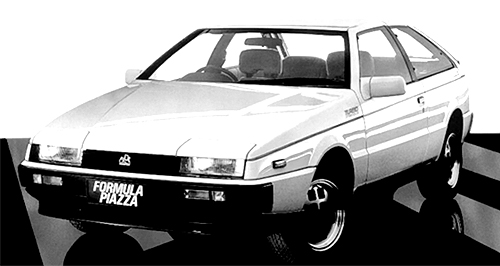Future models - Isuzu - PiazzaCould Isuzu-Mazda relationship revive the Piazza?Long shot: If Isuzu decides to expand its existing relationship with Mazda, the Piazza sportscar nameplate could make a comeback using MX-5 underpinnings. Isuzu studying return to passenger cars but short product lifecycle requires partner20 Feb 2017 JAPANESE commercial vehicle specialist Isuzu is studying a return to the passenger car market, a sector it has not participated in for more than a decade. Having become accustomed to the long product lifecycles of commercial vehicles, the comparatively short lifespan of passenger cars and associated development costs pose a challenge for Isuzu. The logical way to overcome this obstacle is to find a suitable co-development partner. Previously Isuzu has used relationships with General Motors, Honda and Subaru to market Isuzu-built or rebadged passenger cars around the world. One such partner could be Mazda, with which Isuzu has already established an arrangement to co-develop the next D-Max and BT-50 one-tonne utes as an expansion of an existing long-term collaboration in the Japanese commercial vehicle market. Speaking with GoAuto at the updated D-Max and MU-X launch in Queensland earlier this month, Japanese Isuzu Motors executives both visiting from Japan and based in Australia explained the advantages of concentrating on commercial vehicles centred on their long product lifecycles. One example given was the Giga heavy truck, which recently entered its second generation after the original spent 20 years on the market. They said medium duty trucks such as the N- and F-Series can last 15 years between major updates and light-commercial vehicles such as the D-Max typically have a 10-year lifespan, while passenger cars undergo full replacement every five to seven years. However the executives revealed Isuzu is “studying” a passenger car comeback, pointing to previous successful Isuzu passenger cars such as the Gemini that was built in Australia by Holden in the 1970s and 80s. The Gemini was produced by Isuzu for three generations until the company fell victim to Japan’s economic collapse of the early 1990s, after which it used the nameplate on rebadged Hondas until the year 2000. Although unable to comment on the Mazda relationship, when GoAuto suggested the BT-50 link could be expanded to passenger cars, specifically reviving the Piazza nameplate with a rear-drive sportscar using MX-5 underpinnings, the Isuzu executives could barely contain their enthusiasm. Mazda already shares the MX-5 with Fiat Chrysler Automobiles, which sells a redesigned version with unique engines as the Fiat/Abarth 124 Spider. Isuzu produced the Giugiaro-designed, wedge-shaped rear-drive Piazza between 1980 and 1990, introduced to Australia with Holden badges and a turbocharged 2.0-litre four-cylinder petrol engine from 1986. A second-generation, front-wheel-drive model launched in Japan and North America in 1990 but lasted just three years before it succumbed to the bursting bubble that was the Japanese economy.  Read more |
Click to shareIsuzu modelsMotor industry news |

















Facebook Twitter Instagram